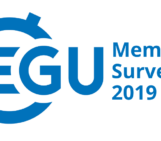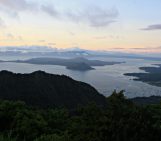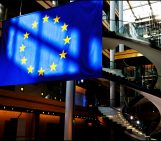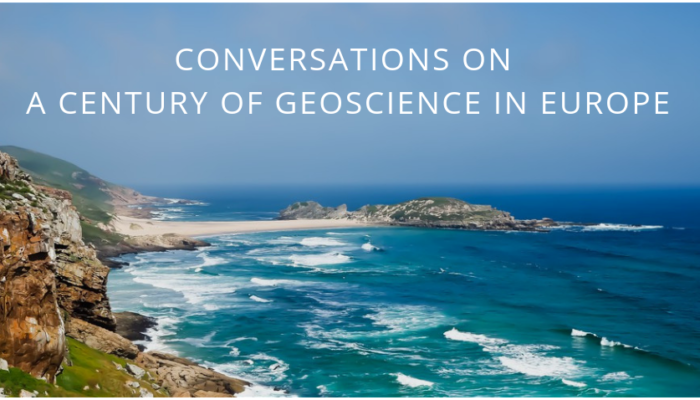
Over the last century, geoscientists have made incredible contributions to our understanding of the Earth, the solar system, and beyond. Inspired by the American Geophysical Union (AGU) and the International Union of Geodesy and Geophysics (IUGG) centennials, which are celebrated in 2019, we would like to highlight Europe’s role in shaping the geosciences and the great achievements of European geoscientists within the last century.
In this series of interviews, scientists reflect on the last 100 years of Earth, space and planetary sciences in Europe and share their perspectives on the future.
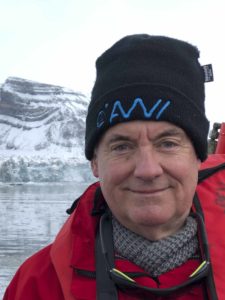 Bernhard Diekmann, Head of the Research Unit Potsdam of the Alfred Wegener Institute (AWI) Helmholtz Center for Polar and Marine Research and Professor of Quaternary Geology at Potsdam University
Bernhard Diekmann, Head of the Research Unit Potsdam of the Alfred Wegener Institute (AWI) Helmholtz Center for Polar and Marine Research and Professor of Quaternary Geology at Potsdam University
In your opinion, what are some of the biggest ways Europe and European scientists have shaped the geosciences within the last century?
In the last century, European geoscientists have helped to develop the geosciences from a purely descriptive point of view of Earth’s shape and rock and fossil record to a modern process-oriented field of research. The focus now is on the transience of the Earth’s plot and on the changeability of geological processes.
Ahead of his time was Alfred Wegener, one of the last polymath scholars, who more than a hundred years ago propagated the hypothesis of continental drift. It took until the 1960s for his hypothesis to be confirmed and generally accepted. Crucial to this has been tremendous progress in marine geology and deep drilling programs, involving many Europeans. Thus, the ocean floor spread was recognized as an engine of continental drift. A special insight from a European point of view was the desiccation of the Mediterranean five million years ago, which expanded our imagination of natural powers beyond what we knew until that time in the 1970s.
Another important achievement in geoscience has been understanding the interactions between geological processes and climate change. Thus, the content of atmospheric greenhouse gases is decisively controlled by magmatic activity, surface weathering, and the biological pump in the ocean. Astronomically controlled fluctuations in solar radiation, on the other hand, externally control climate change on Earth. It was in the tradition of the Swiss geologist Louis Agassiz (1807-1873), when geographer and geologist Albrecht Penck from Germany (1985-1945) recognized the landscape-shaping forces of the glacial ice sheets and systematically explained the glacial processes. The British palaeoclimatologist Nicholas Shackleton (1937-2006) made a breakthrough to understanding the glacial and interglacial cycles in recent geological history. He used marine muds as a reading book of environmental change, which he evaluated using sophisticated geochemical and statistical methods.
Which European researcher from the last century has influenced your work the most?
It was less the great heroes of the geosciences than the direct professors, teachers and supervisors, who shaped me. Because they knew how to carry on the geological knowledge and the enthusiasm for it in the form that I am doing today. Without these people, I would never have realized the immense social importance of geoscience. In addition, the immediate scientific partners in the day-to-day research are worthy of appreciation. Only joint action strengthens the research community.
For the next generation of researchers, what skills/technology/concepts do you think will be the most important for advancing the next century of geoscience?
The methodological achievements of the geosciences are fundamentally preserved. Elemental is the consideration of the time-space dimensions in the Earth system. Technological progress should aim to improve scalarity of research: from the nanoscale of microbial activity to the expanses of the ocean and outer space. Snapshots of observation are replaced by time series in the resolution from the blink of an eye to the distant past and future. Regardless of field geologist observations, independent measurement techniques need to be further developed. These include remote sensing, using unmanned vehicles and developing high-tech observation equipment. Projects such as the forthcoming MOSAIC campaign in the Arctic Ocean (Multidisciplinary drifting Observatory for the Study of Arctic Climate) set the course for such an integrative approach in the international network.
The buzzword ‘big data’ describes the triad of data collection, data analysis and modeling, which is also essential for the geosciences. Only in this way, consistent interpretations and predictions of environmental change are possible. In the applied field, the development of environmentally friendly exploitation of raw materials is required, as well as the acceptable disposal of contaminated materials and sites.
What do you think will be the biggest challenges for the geosciences in the next century?
During the last 100 years, the focus in geological research was understanding of processes in Earth’s interior and skin. Furthermore, it was about the exploitation of raw materials and resources. The challenge of the next few years is more the sustainable conservation of our environment, our natural heritage, and geological resources. Water availability plays an important role in the course of population growth and for settlements in remote regions. Another challenge are advances in predicting natural hazards and developing alternative energies.
With coasts in transition, we are living at the edge. In today’s world, large cities and highly populated areas are often located in low-lying areas along the oceans and seas. These areas are affected by the consequences of global warming, like ongoing sea-level rise, stronger storms as well as more frequent floods and tsunamis. Even the remote coasts of the Arctic undergo dramatic erosion that lead to the release of frozen carbon inventories, contributing to the greenhouse effect. Actually, the essential role of polar regions for the Earth and climate system has only been recognized in recent decades with the decline in sea-ice coverage, melting ice sheets, permafrost thaw, and the turnover of ecosystems.
We have to face severe threats to human life. The geosciences should no longer be seen as an individual field of research, but must be integrated into a holistic view of natural and social sciences. In addition to the pure scientific task, outreach activities should be intensified. The successful exchange with stake holders and the implementation of international agreements for preserving our Earth will be a noble task of the future generation, which is currently almost failing under the present political framework conditions.
Interview by Olivia Trani, EGU Communications Officer
You can find more of our interviews on a century of geoscience in Europe here.

